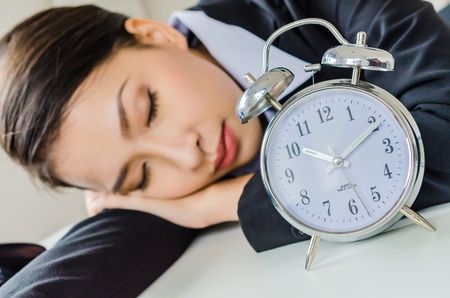Introduction: Nightmares and Sleep Disorders in Everyday Life
Nightmares and sleep disorders are not just rare or isolated problems—they’re part of the everyday lives of millions of Americans. In fact, if you ask around, chances are you’ll find that almost everyone has experienced a restless night or a disturbing dream at some point. These issues go far beyond a single bad dream or an occasional sleepless night. They affect how we feel, think, and even interact with others in our day-to-day routines.
The Cultural Prevalence of Nightmares and Sleep Disorders
In American culture, discussions about sleep troubles are common. From late-night TV commercials advertising sleep aids to memes joking about insomnia on social media, it’s clear that many people deal with these problems. According to the American Academy of Sleep Medicine, up to 50% of adults experience occasional nightmares, and about 10-15% struggle with chronic sleep disorders like insomnia or sleep apnea.
Common Types of Sleep Disorders in the US
| Type of Sleep Disorder | Description | Cultural References |
|---|---|---|
| Nightmares | Vivid dreams causing fear or anxiety; often remembered after waking up | Mentioned in movies like “A Nightmare on Elm Street”; often discussed in therapy or wellness blogs |
| Insomnia | Trouble falling or staying asleep; frequent awakenings during the night | Common topic in sitcoms and late-night talk shows; many over-the-counter remedies marketed |
| Sleep Apnea | Breathing repeatedly stops and starts during sleep; often leads to daytime tiredness | Frequently highlighted in health campaigns; CPAP machines featured in popular media |
| Restless Legs Syndrome (RLS) | Uncontrollable urge to move legs, usually at night | Mentioned in medication ads and online support forums |
The Impact on Daily Life and Health
The effects of nightmares and sleep disorders reach far into daily life. Poor sleep can make it hard to concentrate at work or school, cause mood swings, and even increase the risk for conditions like heart disease and depression. Many Americans turn to coffee or energy drinks just to get through the day when their sleep is disrupted. This cycle of poor rest and coping strategies has become a familiar pattern across the country.
Why Understanding Matters
Recognizing how common and impactful these issues are helps us see that they’re not just personal struggles—they’re public health concerns. By understanding the connection between nightmares and sleep disorders, we can start finding better ways to cope, support each other, and improve our overall well-being.
2. What Are Nightmares? Defining the Experience
Breaking Down Nightmares
Nightmares are vivid, disturbing dreams that usually wake you up from sleep, leaving you with feelings of fear, anxiety, or sadness. Unlike regular dreams, nightmares feel much more real and emotional, often sticking with you even after you wake up. In the U.S., many people experience nightmares from time to time, but when they happen often or interfere with your rest, they can be a sign of a sleep disorder.
How Nightmares Differ from Regular Dreams and Night Terrors
| Nightmares | Regular Dreams | Night Terrors | |
|---|---|---|---|
| When They Happen | Mainly during REM sleep (late in the night) | Anytime during sleep cycle | Usually during deep non-REM sleep (early in the night) |
| Emotional Impact | Intense fear, anxiety, sadness; often remembered vividly | Mild emotions; often forgotten by morning | Extreme terror; little or no memory after waking |
| Physical Response | May wake up sweating or with fast heartbeat | No major physical response | Screaming, thrashing, hard to calm down if awakened |
| Age Group Affected Most | Children and adults | All ages | Mainly children (rare in adults) |
| Able to Recall Details? | Yes, often in detail | Sometimes/usually vague or forgotten | No or very little recall after waking up |
Common Nightmare Triggers in the U.S.
Certain triggers make nightmares more likely. Here are some common ones people experience in the United States:
- Stress and Anxiety: Worries about work, school, money, relationships, or big life changes can lead to nightmares.
- Trauma: People who have gone through traumatic events (like accidents or violence) may have recurring nightmares—sometimes linked to PTSD.
- Certain Medications: Some drugs for depression, blood pressure, or even over-the-counter sleep aids can cause nightmares as a side effect.
- Lack of Sleep: Not getting enough rest can make nightmares more frequent and intense.
- Eating Before Bed: Having heavy meals late at night can increase brain activity and trigger bad dreams.
- Cultural Influences: Watching scary movies or TV shows—especially around holidays like Halloween—is a common nightmare trigger in American culture.
- Mental Health Conditions: Depression and anxiety disorders are also connected with more frequent nightmares.
![]()
3. Common Sleep Disorders Linked to Nightmares
How Sleep Disorders and Nightmares Connect
Nightmares are more than just bad dreams—they can be a sign of deeper sleep issues. Many people in the U.S. struggle with sleep disorders, and often, these conditions are closely tied to frequent nightmares. Let’s break down some of the most common sleep disorders connected to nightmares and explore how they interact.
Insomnia and Nightmares
Insomnia is when you have trouble falling asleep or staying asleep. People with insomnia often report having more nightmares, possibly because fragmented sleep makes it harder for the brain to process emotions and memories in a healthy way. The stress of not sleeping well can also trigger more vivid and disturbing dreams.
Key Points About Insomnia and Nightmares
| Insomnia Symptom | How It Relates to Nightmares |
|---|---|
| Trouble falling asleep | May increase anxiety and lead to nightmares |
| Waking up often during the night | Interrupts dream cycles, making nightmares easier to remember |
| Feeling unrested after sleep | Poor sleep quality can make nightmares feel worse the next day |
Sleep Apnea and Nightmares
Sleep apnea is a disorder where breathing repeatedly stops and starts during sleep. This condition disrupts normal sleep patterns, which can cause nightmares or make them more intense. People with sleep apnea may wake up gasping or feeling panicked—sometimes unsure if it was a nightmare or their breathing issue that woke them up.
Common Signs of Sleep Apnea Linked to Nightmares
- Loud snoring paired with restless sleep
- Waking up choking or short of breath, sometimes confused with a nightmare sensation
- Feeling exhausted during the day due to poor-quality sleep at night
PTSD-Related Sleep Issues and Nightmares
Post-Traumatic Stress Disorder (PTSD) is a mental health condition often linked to traumatic events. Nightmares are a core symptom for many people living with PTSD in America, especially veterans and survivors of violence. These nightmares usually replay parts of the trauma, making restful sleep very difficult.
PTSD Sleep Struggles Compared to Other Disorders
| Disorder | Main Nightmare Trigger | Typical Nightmare Content |
|---|---|---|
| Insomnia | Anxiety, fragmented sleep | General stress-related dreams |
| Sleep Apnea | Bouts of stopped breathing, physical panic sensations | Suffocation, being chased, drowning themes |
| PTSD-related issues | Past traumatic experiences revisited in dreams | Flashbacks, reliving trauma events in detail |
The Overlap: Why Addressing Both Matters
If you’re dealing with both nightmares and a sleep disorder, treating only one might not solve your problems. For example, improving insomnia without addressing underlying anxiety may still leave you struggling with nightmares. Likewise, using a CPAP machine for sleep apnea may reduce the physical symptoms but not always the nightmares unless emotional support is added.
4. The Science Behind the Connection
What Happens in the Brain During Nightmares and Sleep Disorders?
Recent research from American sleep centers, like the National Sleep Foundation and Stanford Sleep Medicine Center, has uncovered important links between nightmares and sleep disorders. Scientists have found that when we experience nightmares, our brain activity—especially in areas that handle emotion, memory, and fear—can look very similar to what happens in some common sleep disorders. For example, people with insomnia or sleep apnea often show disruptions in their REM (Rapid Eye Movement) sleep cycle, which is when most vivid dreams and nightmares occur.
Neurological Connections: Why the Brain Reacts This Way
During REM sleep, the brain’s limbic system—the part responsible for processing emotions—becomes highly active. If you have a sleep disorder, your brain might not regulate these emotions properly while you’re dreaming. This means you’re more likely to have intense or disturbing dreams. Research has shown that people who struggle with anxiety, PTSD, or depression are also at a higher risk for both nightmares and sleep disorders because of how their brains process stress and memories during sleep.
Table: Common Links Between Nightmares and Sleep Disorders
| Sleep Disorder | How It Affects Nightmares | Key Symptoms |
|---|---|---|
| Insomnia | Disrupted sleep increases dream recall and emotional intensity of nightmares | Trouble falling/staying asleep, frequent awakenings |
| Sleep Apnea | Lack of oxygen during sleep triggers stressful dreams and frequent nightmares | Loud snoring, choking sounds, morning headaches |
| PTSD-related Sleep Issues | Trauma memories replay as nightmares; sleep is shallow and fragmented | Flashbacks, night sweats, jumpiness at night |
| Anxiety Disorders | High stress levels lead to more negative dream content and poor-quality sleep | Nervousness, restlessness before bed, racing thoughts |
Behavioral Factors: Habits That Make Things Worse or Better
Your daily habits also play a big role. For example, consuming caffeine late in the day or using screens right before bed can disrupt your natural sleep rhythms. This makes it harder for your brain to reach deep, restful REM sleep—which increases the chance of experiencing nightmares. On the flip side, practicing good “sleep hygiene,” like keeping a regular bedtime routine and making your bedroom comfortable and dark, helps reduce both nightmares and other sleep disturbances.
The Bottom Line: Mind and Body Are Deeply Linked During Sleep
The latest American studies show that nightmares aren’t just random—they’re often closely connected to underlying issues with how our brains process emotions, memories, and stress during sleep. Understanding these connections can help us make smarter choices about our nighttime routines and seek help if we’re struggling with ongoing problems.
5. Consequences: When Nightmares Disrupt Daily Life
Nightmares and sleep disorders aren’t just scary nighttime experiences—they can spill over and impact daily life in significant ways. People who regularly struggle with nightmares or sleep issues often find that their work, school, and relationships are affected. Let’s break down some of these real-world consequences.
Impact on Work
Lack of restful sleep can make it hard to concentrate at work. Frequent nightmares may leave someone feeling tired, irritable, and less productive. Missing deadlines or making more mistakes becomes common. Some people might even call in sick because they’re too exhausted to function properly.
Challenges in School
For students, nightmares and poor sleep can lead to trouble focusing in class, lower grades, and a lack of motivation. Teachers might notice students falling asleep during lessons or struggling to keep up with assignments. This can create stress for both students and their families.
Strain on Relationships
Sleep problems often lead to mood swings and emotional ups and downs. This can make it difficult to communicate well with friends, partners, or family members. People may become withdrawn or easily frustrated, causing misunderstandings or conflict at home.
Real-Life Effects: A Quick Comparison
| Area of Life | Common Problems Caused by Nightmares & Sleep Disorders |
|---|---|
| Work | Poor concentration, decreased productivity, increased absences |
| School | Lack of focus, lower grades, classroom fatigue |
| Relationships | Moodiness, misunderstandings, emotional distance |
Everyday Stories
Imagine an employee who constantly feels groggy from nightmare-filled nights; they start missing important details in meetings and feel disconnected from coworkers. Or think about a teenager who struggles to stay awake in class after a restless night—they might fall behind on homework and lose interest in activities they once enjoyed. In families or partnerships, disrupted sleep can mean more arguments and less patience for each other.
The effects of nightmares and sleep disorders go far beyond bedtime. Recognizing these impacts is the first step toward finding support and improving overall well-being.
6. Tools and Treatments: American Approaches to Care
Evidence-Based Therapies for Nightmares and Sleep Disorders
In the United States, mental health and sleep specialists often use several proven therapies to help people manage nightmares and sleep disorders. Here are some of the most common:
| Therapy | Description | Who It Helps |
|---|---|---|
| Cognitive Behavioral Therapy for Insomnia (CBT-I) | Focuses on changing thoughts and behaviors around sleep to improve rest and reduce anxiety related to sleeping. | Adults and teens struggling with insomnia or anxiety-driven nightmares. |
| Image Rehearsal Therapy (IRT) | Involves rewriting the script of a recurring nightmare while awake, then practicing the new version before bedtime. | People with PTSD or frequent, distressing nightmares. |
| Exposure, Relaxation, and Rescripting Therapy (ERRT) | Combines exposure to nightmare content in a safe setting with relaxation techniques and rewriting the ending of the dream. | Those experiencing chronic nightmares, especially related to trauma. |
| Sleep Hygiene Education | Teaching good bedtime habits, like keeping a regular sleep schedule and limiting screen time before bed. | Anyone looking to improve their overall sleep quality. |
Medications Commonly Used in the U.S.
Doctors sometimes prescribe medications if therapy alone isn’t enough. However, meds are usually not the first step unless symptoms are severe. Here’s a look at some options:
- Prazosin: Originally for high blood pressure, but often used off-label for nightmares in people with PTSD.
- Antidepressants: Sometimes prescribed if depression or anxiety is part of the problem.
- Sleep Aids: Medications like zolpidem (Ambien) or eszopiclone (Lunesta), used short-term for severe insomnia under close medical supervision.
Lifestyle Changes That Make a Difference
Lifestyle tweaks can have a big impact on both nightmares and sleep disorders. Here are some practical changes that many Americans find helpful:
- Create a calming bedtime routine: Activities like reading or gentle stretching signal your body it’s time to wind down.
- Avoid caffeine and heavy meals late in the day: These can disrupt sleep patterns and make nightmares more likely.
- Keep your bedroom cool, quiet, and dark: The right environment helps you fall asleep faster and stay asleep longer.
- Regular exercise: Even a brisk walk during the day can help you sleep better at night—just avoid vigorous workouts close to bedtime.
The Role of Support Systems in Recovery
Treating nightmares and sleep disorders isn’t just about medication or therapy; support from friends, family, or peer groups makes a big difference. In the U.S., there are several ways people find support:
- Support Groups: Both in-person and online groups help people share experiences, get advice, and feel less alone.
- Mental Health Hotlines: Services like the 988 Suicide & Crisis Lifeline offer immediate help for those in distress or crisis.
- Counseling Services: Many workplaces or schools offer access to counselors who can provide guidance or referrals to specialists.
These approaches reflect how Americans address nightmares and sleep disorders by combining professional care with practical lifestyle shifts and community support systems.
7. Promoting Better Sleep: Practical Tips for Americans
Understanding the American Sleep Landscape
Many Americans juggle busy work schedules, family obligations, and constant digital distractions. This can make it tough to get quality sleep, and sometimes nightmares or sleep disorders follow. The good news is that there are practical, culturally relevant steps you can take to manage nightmares and improve your sleep—without giving up your favorite parts of daily life.
Everyday Strategies Tailored for the U.S. Lifestyle
| Challenge | American-Friendly Solutions | Helpful Resources |
|---|---|---|
| Busy Schedules & Late Nights | Create a set bedtime routine, even if it means winding down with a favorite TV show or podcast. Use blue light filters on devices after sunset. | CDC Sleep Guidelines |
| Stress from Work or School | Try short mindfulness practices like guided meditations on apps popular in the U.S., such as Calm or Headspace. Consider “microbreaks” throughout your day to reduce tension before bedtime. | Headspace App |
| Noisy Environments (apartments, city living) | Use white noise machines or apps with American nature sounds (like rain in Seattle or New England forests) to mask disruptive noises. | National Sleep Foundation: White Noise Tips |
| Caffeine Habits (coffee culture) | Switch to decaf after 2 p.m. Opt for herbal teas like chamomile, which are easy to find at most U.S. grocery stores. | Caffeine and Sleep – Sleep Foundation |
| Lack of Physical Activity | Squeeze in light exercise, such as a neighborhood walk or yoga session—even 10-15 minutes helps. Many local YMCAs offer affordable classes. | Find Your Local YMCA |
Nightmare-Specific Support You Can Try Tonight
- Journaling Before Bed: Write down worries or dreams in a notebook to help process them outside of sleep.
- Limit True Crime Content: If scary TV shows or podcasts leave you uneasy, consider switching to lighter content before bed.
- Create a Safe Space: Surround yourself with comforting items (favorite blankets, family photos) that make your bedroom feel secure—a familiar American approach to comfort.
- Connect with Support: If nightmares are frequent, talk with your primary care provider or reach out to organizations like the Anxiety and Depression Association of America (ADAA).
When to Seek Professional Help?
If nightmares are persistent and interfere with daily life, ask your doctor about cognitive behavioral therapy for insomnia (CBT-I), which is widely available across the United States and often covered by health insurance.


